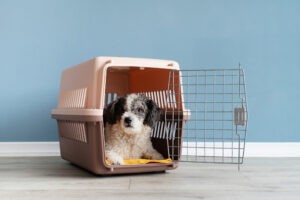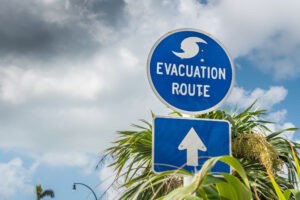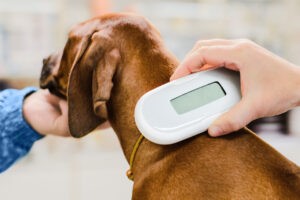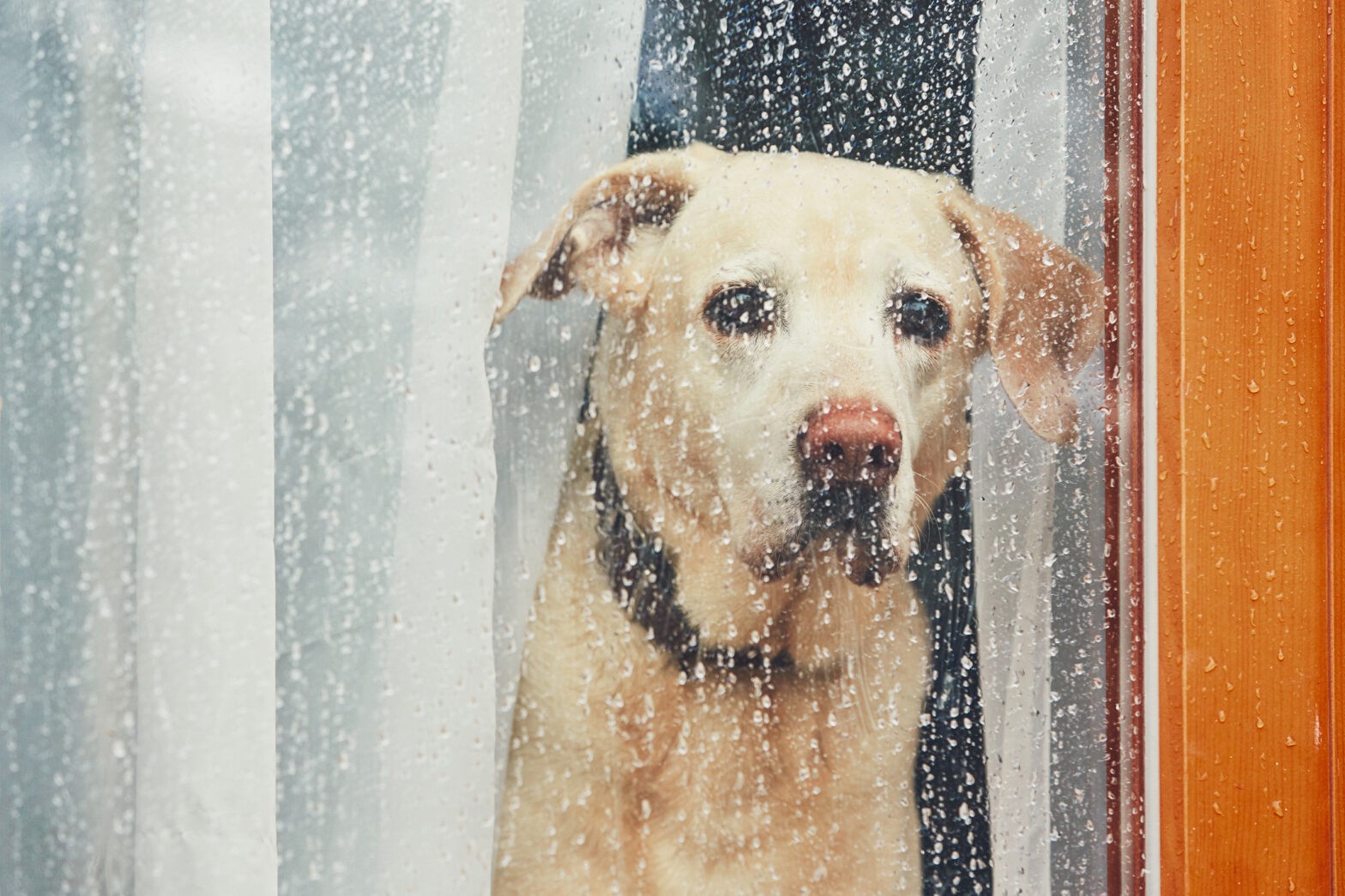Disasters can strike unexpectedly, but being prepared can help you and your pet stay safe in the storm. You need a plan that keeps you calm in the chaos and lets you act quickly when every second counts. You need to know exactly what to do when there is no room for error. You need a plan that includes your pet.
Let the UrgentVet expert team guide you through this scary yet necessary topic. Here are four critical steps to creating a pet-friendly disaster plan.

1: Create a pet emergency kit
Whether a disaster forces you to evacuate or shelter in place, a kit of necessary supplies can help you care for your pet until conditions improve. Your pet-friendly disaster plan should include packing a pet emergency kit in a readily accessible grab-and-go style bag or box that you keep in a safe place. An ideal kit includes:
- Food and water — Pack a three- to seven-day supply of your pet’s food and water, along with portable bowls. Include a manual can opener if your pet eats canned food.
- Medications — Include your pet’s shelf-stable prescription medications, along with a copy of your pet’s medical records.
- Pet first aid kit — Pet first aid kits may be purchased or DIY and should include a pet first aid book, emergency contact information, your pet’s photo, and a copy of your pet’s vaccine records in a waterproof pouch.
- Leash and confinement — Your pet will most likely be scared and stressed during a disaster and will need to be safely confined to a leash, carrier, or crate. If your pet uses a seat belt for car travel, keep one beside your kit. Ideally, your pet should be acclimated to and comfortable with these items before disaster strikes.
- Clean up supplies — These include a litter box and litter, waste bags, and paper towels.
- Comfort Items — Pack your pet’s favorite toys, chews, blanket, or bed to help soothe them in stressful situations.
Inventory and restock your pet emergency kit after every use. Check the kit quarterly for expired products.

2: Plan a pet-friendly evacuation route
You may need to leave your home quickly during a disaster. A safety evacuation plan with your pet ensures you will know where to go and whether your pet will be welcome. Your planning should include:
- Identifying pet-friendly shelters — Research local emergency shelters and charities and hotels that will accept pets. Remember, these resources may be crowded during an emergency, so make a list of several options along each route and store the list in your pet emergency kit.
- Mapping out potential routes — As part of your pet-friendly disaster plan, map out multiple evacuation routes in case some roads are blocked. Familiarize yourself with these routes in advance.
- Rehearsing your evacuation plan — Conduct practice evacuations with your family and pet. Ensure they are comfortable coming when called, being handled or lifted, and quickly placed in their carrier or escorted to your vehicle, basement, or storm shelter.

3: Update your pet’s identification and microchip information
In the chaos of a disaster, pets often panic, escape, and become lost. Current, legible, and easily accessible identification helps ensure they can be returned. Increase the odds of a happy ending by ensuring your pet has multiple forms of identification, such as:
- Identification tags — Tags or personalized collars or harnesses with your pet’s contact info are a visible and fast way to ensure your pet’s safe return.
- Microchip — Microchips provide permanent identification and an additional layer of safety in case your pet’s collar or harness breaks. Verify that your pet’s microchip is registered with your current contact information.
- Records and photos — Include a recent photo of your pet, along with their microchip number, veterinary records, and a description of their appearance, in your emergency kit. These items can help you claim ownership if other methods fail.

4: Secure your home
Preparing your home can reduce the risk of injury to your pet if you must shelter in place. This step is especially important for your pet-friendly disaster plan, because veterinary care may be unavailable during an emergency. Make your home a safe haven by considering indoor and outdoor hazards and taking protective measures, including:
-
- Creating a safe space — Determine the safest place in your home for you and your pet if evacuation isn’t possible. Ensure it’s away from windows and other potential hazards. Consider keeping basic supplies and a pet crate in this space.
- Pet-proofing your home — Secure heavy furniture and objects that could fall and harm your pet. Ensure windows and doors are secure to prevent escape or injury and avoid contact with hazards such as smoke or flying debris.
- Keeping your pet inside — Don’t allow your pet outside during or immediately after a disaster. Once the threat has passed, check your yard, fence, and surrounding areas for damage or hazards before you let your pet outside.
- Displaying emergency contact information — Post emergency contact information, such as your pet’s regular veterinarian, the nearest UrgentVet location, and local emergency and animal shelters, in a visible place.
No one wants to think about disasters, but preparing yourself and your pet for potential emergency events can ensure you and your pet stay alive and safe when they do happen. A pet-friendly disaster plan ensures you can focus on the safety of the whole family—including your pet—so you can weather the storm together.

At UrgentVet, we can’t prevent disasters, but we can help care for your pet’s unexpected or after-hours needs. If your pet is experiencing a non-life-threatening emergency, check in online at an UrgentVet near you for convenient, compassionate veterinary care—because your pet can’t wait to feel better.





